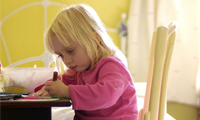Stage 1
 The study began in 1996 and first stage was completed in 2000.
The study began in 1996 and first stage was completed in 2000.
This first study provided an important snapshot of children being adopted in England in 1996 and 1997 and revealed the plans that were being made for these children to remain in contact with members of their birth family after adoption. The workings of face-to-face contact in children’s preschool years were explored through interviews with adoptive parents and birth relatives.
The study found that less than one in five children had a plan to have contact with birth relatives. In cases where this contact have been attempted experiences had largely been positive. Feelings and attitudes of social workers, adoptive parents and birth relatives all emerged as important in shaping contact plans and influencing the experience of contact.
Research Team
Professor, School of Social Work
Emeritus Professor, School of Social Work
Funder details
The study was funded by a PhD studentship awarded to Beth Neil. Professor June Thoburn supervised the project.
Key documents: Stage 1


)

